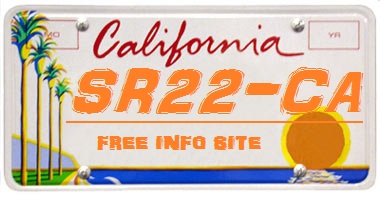September 4, 2012
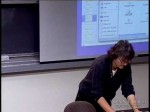
Lecture 11 by Julie Zelenski for the Programming Abstractions Course (CS106B) in the Stanford Computer Science Department. Julie continues with recursive backtracking and introduces pointers and recursive data. Following, she focuses on solving the problems rather than the exact code and later uses the example of a program that will solve a Sudoku puzzle. She explains that recognizing and looking for patterns between all of the different recursive examples is an important component to learning recursion. Complete Playlist for the Course: www.youtube.com CS 106B Course Website: cs106b.stanford.edu Stanford Center for Professional Development scpd.stanford.edu Stanford University: www.stanford.edu Stanford University Channel on YouTube: www.youtube.com
Tags: c++, education, language, permutation, problems-rather, programming, science, stanford-university
Posted in Software Functioning Abnormally | No Comments »
March 4, 2012
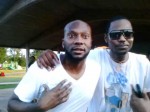
apple computer monitor problem computer repair computers diy do it your self download downloads drive dvd education entertainment fix functioning abnormally gaming howto howto & style how to fix internet internet network problem laptop laptop repair linux manager microsoft monitor monitor…
Tags: abnormally, diy, downloads, dvd, fix-internet, functioning, internet network problem, microsoft-monitor, science, screen, technology, vista
Posted in Internet Network Problem | No Comments »
December 8, 2011

If you computer is running slow, in this video you can see how you can use two tools that can help fix that problem
Tags: check, complete, defragmenter, diy, engineering, faster, hotmonkey, models, prof-eric, run, running-slow, science, see-how, windows
Posted in Slow Working Computer | No Comments »
December 8, 2011

Lecture 9: Binary search, bubble and selection sorts Instructors: Prof. Eric Grimson, Prof. John Guttag View the complete course at: ocw.mit.edu License: Creative Commons BY-NC-SA More information at ocw.mit.edu More courses at ocw.mit.edu
Tags: complete, diy, engineering, exceptions, flow, models, problem, prof-eric, prof-john, science
Posted in Slow Working Computer | No Comments »
December 7, 2011
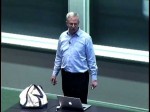
Lecture 24: Course overview; what do computer scientists do? Instructors: Prof. Eric Grimson, Prof. John Guttag View the complete course at: ocw.mit.edu License: Creative Commons BY-NC-SA More information at ocw.mit.edu More courses at ocw.mit.edu
Tags: binary, dell, guttag-view, license, modules, ram, science, science & technology, space, surround-sound
Posted in Slow Working Computer | No Comments »
October 22, 2011
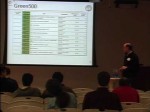
Google Tech Talks January, 25 2008 ABSTRACT In this talk we examine how high performance computing has changed over the last 10-year and look toward the future in terms of trends. These changes have had and will continue to have a major impact on our software. A new generation of software libraries and algorithms are needed for the effective and reliable use of (wide area) dynamic, distributed and parallel environments. Some of the software and algorithm challenges have already been encountered, such as management of communication and memory hierarchies through a combination of compile–time and run–time techniques, but the increased scale of computation, depth of memory hierarchies, range of latencies, and increased run–time environment variability will make these problems much harder. We will focus on the redesign of software to fit multicore architectures. Speaker: Jack Dongarra University of Tennessee Oak Ridge National Laboratory University of Manchester Jack Dongarra received a Bachelor of Science in Mathematics from Chicago State University in 1972 and a Master of Science in Computer Science from the Illinois Institute of Technology in 1973. He received his Ph.D. in Applied Mathematics from the University of New Mexico in 1980. He worked at the Argonne National Laboratory until 1989, becoming a senior scientist. He now holds an appointment as University Distinguished Professor of Computer Science in the Electrical Engineering and Computer Science Department at …
Tags: argonne, bachelor, chicago, chicago-state, computer-science, electrical, engedu, functioning abnormally, googletechtalks, illinois, laboratory, professor, science, talk, university
Posted in Software Functioning Abnormally | No Comments »
October 14, 2011
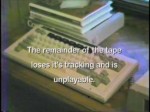
More highlights from my “NightLife Show” which ran on local cable TV in FL from 1980-1986. This is one of my final NightLife TV Shows that made it to air. This program shows the revolutionary Adam Computer in it’s final days. This program is not complete as the original videotape loses it’s tracking before the end. However, since it’s one of the few programs devoted to the departed Adam, I wanted to show it anyway. I had to read off the specs as I didn’t know what any of this was back then. The Coleco Adam was an attempt in the early 1980s by American toy manufacturer Coleco to follow on the success of its ColecoVision game console. The Adam was not very successful, partly because of early production problems. In its favor, the Adam had a large software library from the start. It was derived from and compatible with the ColecoVision’s software and accessories, and, in addition, the popular CP/M operating system was available as an option. Its price gave a complete system: a 64 KB RAM computer, tape drive, letter-quality printer, and software including the Buck Rogers: Planet of Zoom video game. The IBM PCjr sold for $669 but included no peripherals, and although the popular Commodore 64 sold for around $200, its price was not much lower after the purchase of a printer, tape or disk drive, and software. Like many home computers of its day, it used a television set for its monitor. The SmartWriter electronic typewriter loads when the system is turned on. In this mode, the …
Tags: classic, coleco, diy, education, engineering, fractal, kerry, permutations, problem, programming, science, software problems, then-discusses
Posted in Software Functioning Abnormally | No Comments »
October 14, 2011
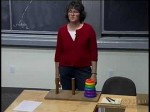
Lecture 9 by Julie Zelenski for the Programming Abstractions Course (CS106B) in the Stanford Computer Science Department. Julie goes over recursion and the proper ways to solve problems recursively. She continues with the example of a program that draws a fractal image and explains a Mandarin code to illustrate the different possibilities of drawing different pictures. She then discusses the problem of moving a stack of disks from one peg to the other peg. Later, she demonstrates the basic principle necessary to solve the problem with a child’s toy and goes through how to solve the problem with a program. Complete Playlist for the Course: www.youtube.com CS 106B Course Website: cs106b.stanford.edu Stanford Center for Professional Development scpd.stanford.edu Stanford University: www.stanford.edu Stanford University Channel on YouTube: www.youtube.com
Tags: education, engineering, fractal, fractal-image, lecture, permutations, problem, professional, programming, science, software problems, solve-problems, technology, then-discusses
Posted in Software Functioning Abnormally | No Comments »
August 31, 2011
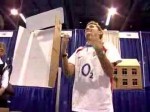
Andrew Nowell of Nottingham, England has come to the 2007 Intel International Science and Engineering Fair in Albuquerque, New Mexico to present his remote computer interface and security system. Trouble is, his computer won’t start…
Tags: albuquerque, engineering, his-computer, how to fix, intel, intelisef, nottingham, remote-computer, science, seed
Posted in Motherboard Problem | No Comments »


